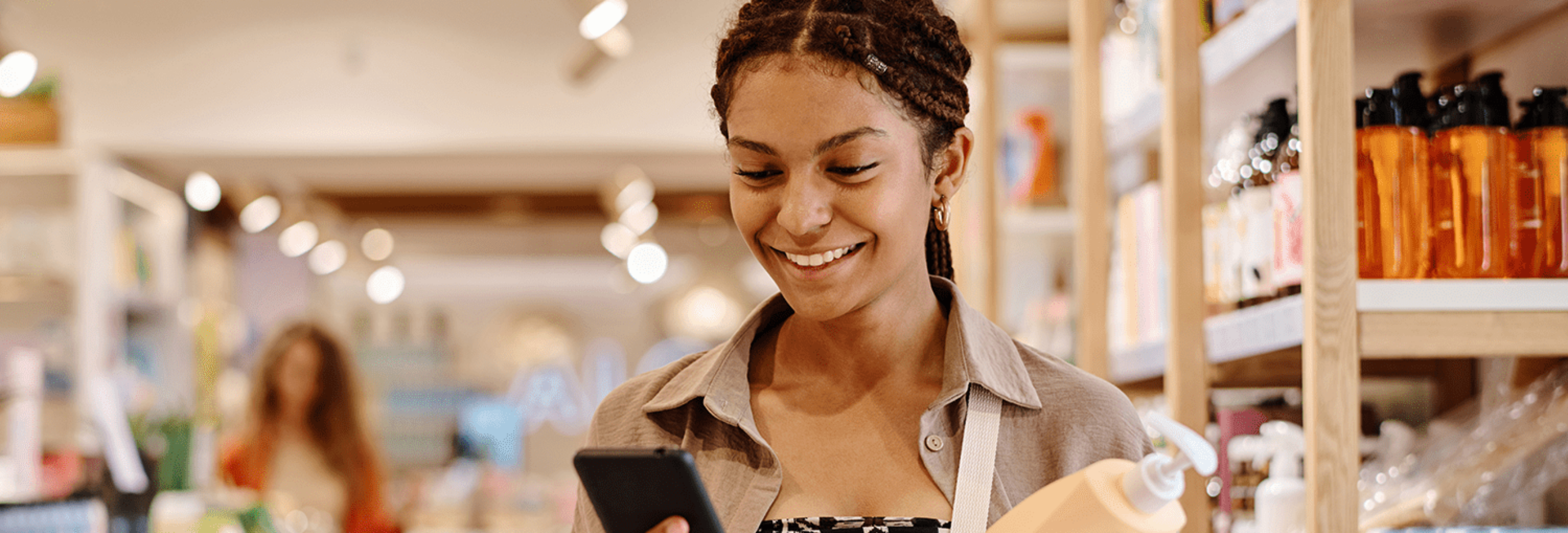In the ever-evolving beauty industry, trends and consumer preferences fluctuate like shades on a palette. Understanding the intricate layers of shopper behavior is key for manufacturers and retailers seeking to empower and resonate with their shoppers.
The onset of 2023 witnessed a notable transformation in general shopping patterns due to inflationary pressures. Shoppers, now more budget-conscious, were less impulsive, less emotional, and trips were more often characterized as rational researched efforts where shoppers sought to strike a delicate balance between quality and affordability.
Social and Health-Conscious trips decreased as shoppers fought to make ends meet and many could no longer rationalize the additional spend for more sustainable or health-focused products. Instead, we saw a surge in deal-hunting and Brand Name Buyers. The latter was driven by brand loyalty as well as the need to invest in dependable products; shoppers were less interested in taking a chance on an unfamiliar brand at risk of receiving a subpar product.
Many of these total landscape changes were echoed in the beauty category. However, there were some unique channel differences within beauty that told a slightly different story from the total landscape that are worth digging into, specifically:
Brand Name Buyers were often replaced by Deal Hunters in Mass, Drug, and Dollar stores. Beauty shoppers in those channels were looking to stretch their beauty dollars; through research and planning they chased the deals and were apt to switch brands for a good deal. As trendy new brand name launches flooded social media, so did the rise of ‘dupes’. Shoppers were no longer seen as having to settle for a cheaper item; instead, there was a newfound allure in discovering a dupe for a high-end beauty product. Its impact really became evident when Google search results began featuring a link to a dupe when users searched for a premium beauty product.
So what happened to Brand Name Buyers in Beauty? It’s evident that they didn’t disappear, considering the sustained popularity of premium beauty launches that continue to sell out for months after gaining viral attention on TikTok. So while they didn’t disappear, they simply evolved – savvy shoppers learned where to save and where to spend. Surprisingly, the Club channel, known for its appealing deals and bulk packaging, emerged as a growth center for beauty Brand Name Buyers. Articles began popping up highlighting the surprising beauty brands you wouldn’t expect to find at Costco. Brands typically reserved for high-end beauty retailers were popping up at Costco across skincare, cosmetics, fragrance, and more, resulting in growth among this shopper type.
So why do all of these changes in 2023 matter? As an increasing number of shoppers embrace these more reactionary trends, they are influencing and shaping a lasting transformation in the way beauty products are purchased. It’s essential to adjust and collaborate with shoppers as they become more rational in their shopping behavior. Whether you’re selling a high-end product or creating a dupe, it’s crucial to provide a clear incentive for purchase or, if you’re the dupe maker, ensure it gains the viral attention needed to truly be recognized as a ‘really good dupe’.
Here are just a few thought starters based on our Shopper Activation Framework:
- A nudge in the right direction: Beauty isn’t a Trip Driving Essential in mass, grocery, drug, and club stores; shoppers are there for other items, and aren’t necessarily planning or searching for beauty. Given the rise of Deal Hunters in Mass, Grocery and Drug in particular, ensure there are value-based offers throughout categories that are trip drivers. This could include a curated selection of trending (on TikTok) beauty items, even better if some low-cost dupes are included! These subtle nudges leverage shoppers’ craving for perceived value, prompting them to include extra beauty product purchases in their shopping trip, even if beauty wasn’t initially on their list.
- Guided Glam: While price as a trigger is easier said than done, in beauty it’s not always the answer. Loyalty points, free gifts, and samples can also be quite effective in swaying purchase; however, staff recommendations play a significant role in beauty. The crucial factor is that staff recommendations are effective when they come from a credible team member. A random employee from the floor without makeup is less likely to have the same impact as a beauty advisor in the section showcasing on-trend makeup, nails, or hairstyles. Although not applicable in every location, certain beauty boutique-style stores within larger retailers, such as Ulta at Target, might find it more fitting to utilize this approach compared to other retailers where beauty is integrated into the main product line.
As we move forward, the beauty industry has the opportunity to not only meet but exceed the expectations of savvy consumers. By staying agile and responsive, we can ensure that the beauty shopping experience remains as vibrant and diverse as the products themselves. Want to discuss what POSM materials will be most compelling or understand the beauty experience across or within retailers? Contact us to talk all things beauty.


